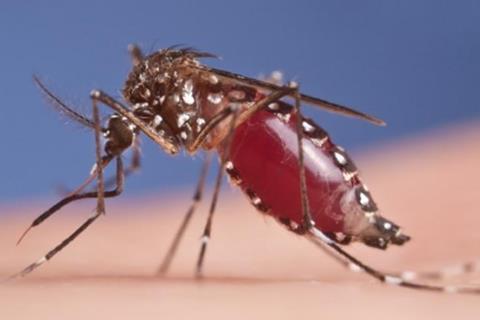Aedes aegypti mosquitoes spread illnesses including dengue, yellow fever and Zika. Anti-disease programmes breed and release non-biting male mosquitoes that are either sterile or prevent transmission of diseases.
READ MORE: Field deployment of Wolbachia-infected mosquitoes using uncrewed aerial vehicle
READ MORE: Engineered human skin bacteria repel mosquitoes for 11 days, study shows
These mass release programmes can be substantially more effective than the widespread spraying of insecticides, as these insects have developed resistance to many commonly employed chemicals.
The new study, by the Universities of Exeter and Wageningen and published in the Journal of Applied Microbiology, an Applied Microbiology International publication, examined how Asaia bacteria affects the development of mosquito larvae.
Mass rearing
The results show that Asaia accelerated development time by a day – which could boost mass-rearing schemes that need to produce millions of adults.
“We know that every species, including humans, depends on a ‘microbiome’ – a complex mix of microorganisms living inside the body,” said Professor Ben Raymond, of the Centre for Ecology and Conservation on the University of Exeter’s Penryn Campus in Cornwall.
“Asaia bacteria have been suggested as beneficial parts of mosquito microbiomes, but this has never been rigorously tested in Aedes aegypti.
“We know that Aedes aegypti mosquito larvae can’t develop at all without a microbiome, and our study shows two Asaia species can play a beneficial role.”
Accelerating by a day
The larval period of Aedes aegypti mosquitoes usually lasts about 10 days, so accelerating by a day could be a valuable boost to mass production.
In the study, Asaia bacteria were added to the water where mosquito larvae developed. Two particular species accelerated larval development. The mechanism for this is unclear, but it does not appear that these bacteria provided direct nutritional benefits.
Instead, they changed the wider bacterial community, reducing abundance of certain bacteria – including some species that may be slightly parasitic.
Asaia bacteria also remove oxygen – creating conditions that produce hormones to promote development.
The paper, published in the Journal of Applied Microbiology, is entitled: “Asaia spp. accelerate development of the yellow fever mosquito, Aedes aegypti, via interactions with the vertically transmitted larval microbiome.”








No comments yet